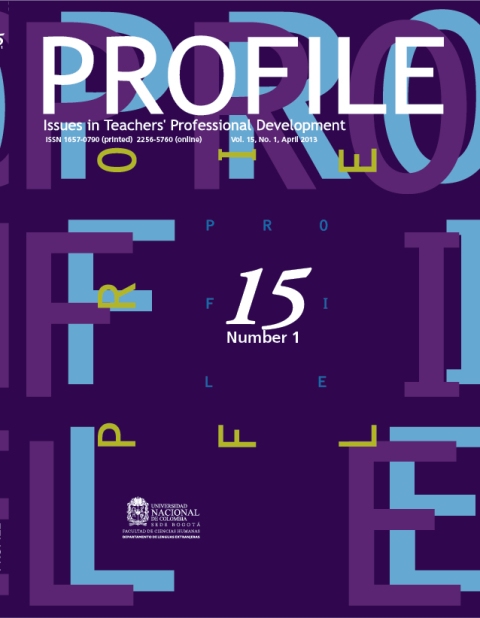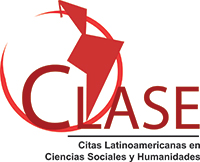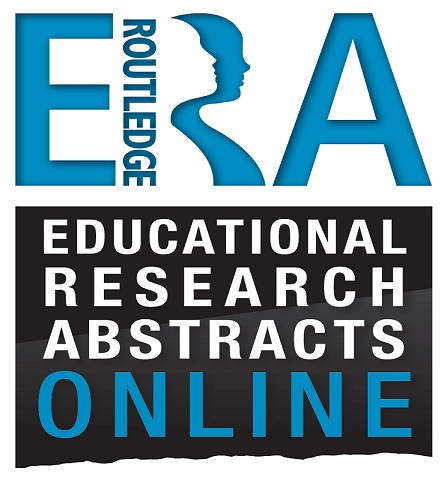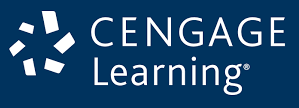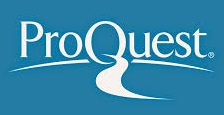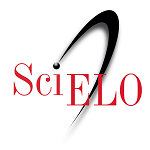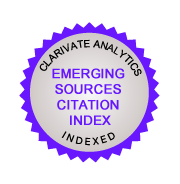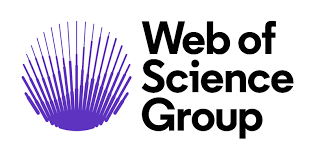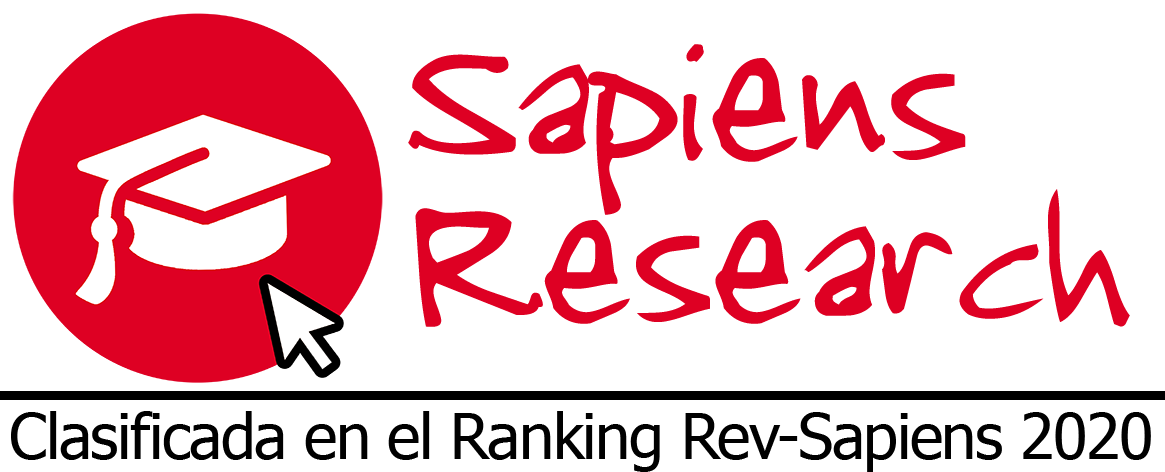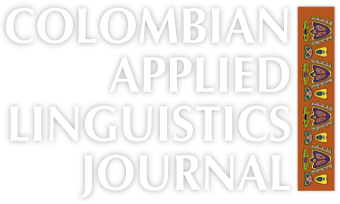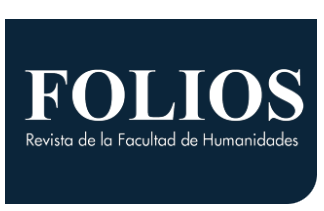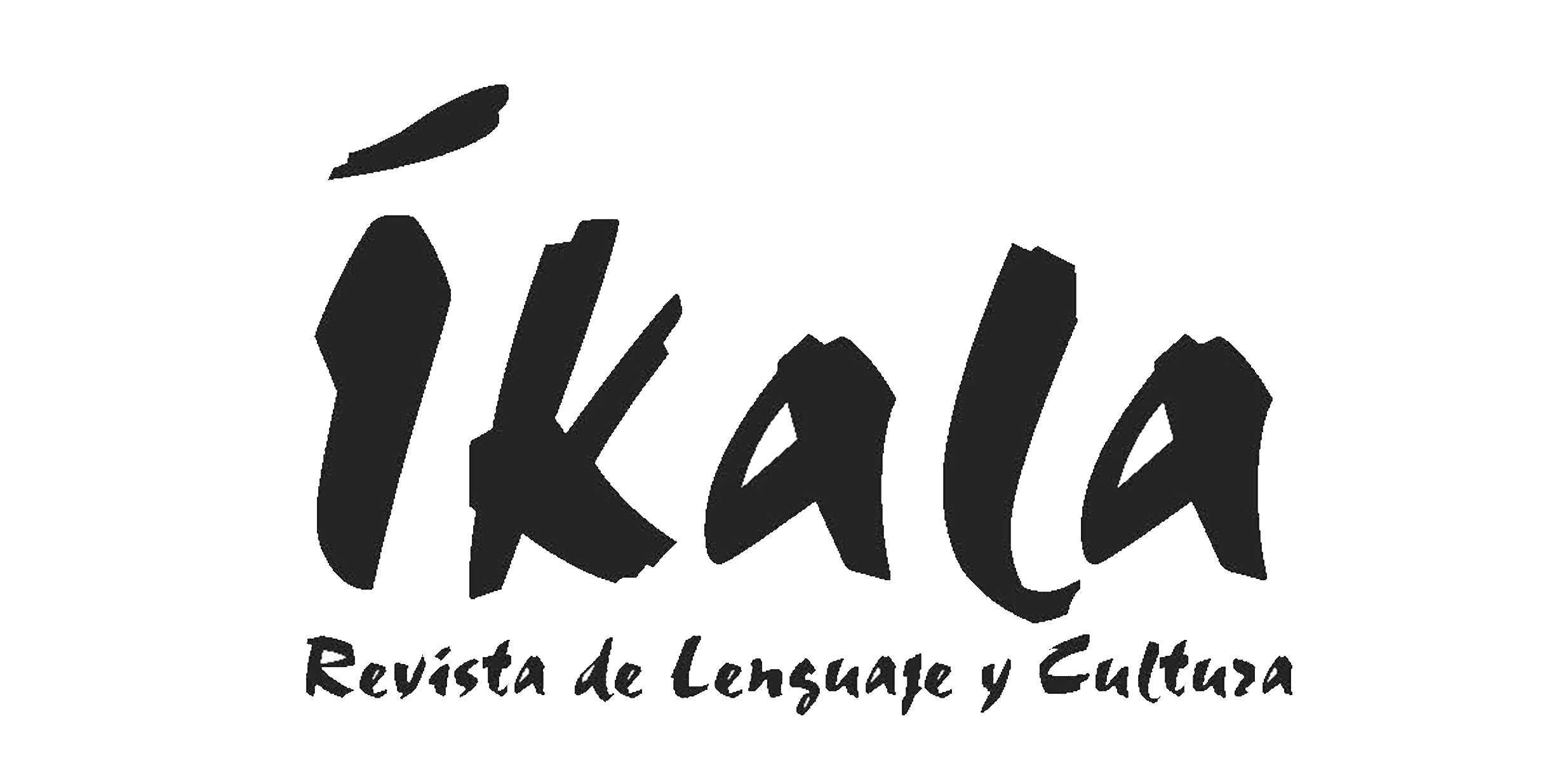The Role of Collaborative Work in the Development of Elementary Students’ Writing Skills
El papel del trabajo colaborativo en el desarrollo de las habilidades de escritura de estudiantes de primaria
Keywords:
Collaborative learning, writing in elementary school, writing process (en)Aprendizaje colaborativo, escritura en primaria, proceso de escritura (es)
We report the findings of a two-phase action research study focused on the role of collaborative work in the development of elementary students’ writing skills at a Colombian school. This was decided after having identified the students’ difficulties in the English classes related to word transfer, literal translation, weak connection of ideas and no paragraph structure when communicating their ideas. In the first phase teachers observed, collected, read and analyzed students’ written productions without intervention. In the second one, teachers read about and implemented strategies based on collaborative work, collected information, analyzed students’ productions and field notes in order to finally identify new issues, create and develop strategies to overcome students’ difficulties.
Presentamos los resultados de una investigación-acción sobre el papel del trabajo colaborativo en el desarrollo de habilidades de escritura de estudiantes de primaria en una escuela colombiana. El estudio se realizó tras haber identificado las dificultades de los alumnos en las clases de inglés relacionadas con la transferencia de palabras, la traducción literal, la débil conexión de las ideas y la falta de estructura del párrafo al comunicar sus ideas. En la primera fase los docentes observaron, recogieron, leyeron y analizaron las producciones escritas de los alumnos sin realizar ninguna intervención pedagógica. En la segunda, los profesores leyeron sobre estrategias de trabajo colaborativo y las implementaron.
The Role of
Collaborative Work in the Development of Elementary Students’ Writing
Skills*
El papel del trabajo colaborativo en el desarrollo de las habilidades de escritura de estudiantes de primaria
Yuly Yinneth Yate González*
Luis Fernando Saenz**
Johanna Alejandra Bermeo***
Andrés Fernando Castañeda Chaves****
Corporación Colegio San Bonifacio de las Lanzas, Colombia
* yuly.yate@sanboni.edu.co
** luis.saenz@sanboni.edu.co
*** johale238@yahoo.com
**** andres.castaneda@sanboni.edu.co
This article
was received on July 1, 2012 and accepted on January 12, 2013.
In this
article we report the findings of a two-phase action research study focused on
the role of collaborative work in the development of elementary students’
writing skills at a Colombian school. This was decided after having identified
the students’ difficulties in the English classes related to word
transfer, literal translation, weak connection of ideas and no paragraph
structure when communicating their ideas. In the first phase teachers observed,
collected, read and analyzed students’ written productions without
intervention. In the second one, teachers read about and implemented strategies
based on collaborative work, collected information, analyzed students’
productions and field notes in order to finally identify new issues, create and
develop strategies to overcome students’ difficulties. Findings show
students’ roles and reactions as well as task completion and language
construction when motivated to work collaboratively.
Key words: Collaborative learning, writing in elementary school, writing process.
Presentamos
los resultados de una investigación-acción llevada a cabo en dos
fases, centrada en el papel del trabajo colaborativo en el desarrollo de
habilidades de escritura de estudiantes de primaria en una escuela colombiana.
El estudio se realizó tras haber identificado las dificultades de los alumnos
en las clases de inglés relacionadas con la transferencia de palabras,
la traducción literal, la débil conexión de las ideas y la
falta de estructura del párrafo al comunicar sus ideas. En la primera
fase los docentes observaron, recogieron, leyeron y analizaron las producciones
escritas de los alumnos sin realizar ninguna intervención
pedagógica. En la segunda, los profesores leyeron sobre estrategias de
trabajo colaborativo y las implementaron; recopilaron información,
analizaron las producciones textuales de los estudiantes y las notas de campo
tomadas para identificar nuevos problemas, crear y desarrollar estrategias que
ayudaran a los estudiantes a superar sus dificultades. Los hallazgos muestran
cómo reaccionaron los estudiantes ante el trabajo colaborativo, y
asimismo la forma como realizan tareas y construyen su lenguaje cuando
están motivados a trabajar de esta manera.
Palabras clave: aprendizaje colaborativo, escritura en primaria, proceso de escritura.
Introduction
This research project seeks to examine the role of
collaborative work in the development of elementary students’ writing
skills in their English classes at the Corporación
Colegio San Bonifacio de las Lanzas. Taking into account
that elementary school students have not yet started their formal writing
process in English, we assessed students to determine their current standing on
their ability to write and what they implemented when composing written tasks.
Through this, the elementary language teachers would develop the necessary
strategies to help students improve and create solid bases for an accurate
writing process, as well as establish departure points to improve upon in the
years to come.
The authors of this article, who worked in grades 2,
3, 4 and 5, decided to work together in order to find strategies to help
students when writing due to an observation made on the performance of
elementary students for at least a year. We noticed some difficulties when
students wanted to write their ideas in English such as transferring words and
expressions from Spanish (using literal translation), reduced or basic vocabulary,
weak connection of ideas and no paragraph structure. Also, most of the students
showed a lack of interest and were reluctant to compose single sentences (a
simple task) as well as get involved in longer assignments.
Many authors have written about the benefits of
writing throughout history, remarking on its power and its ability to convey
knowledge and ideas (MacArthur, Graham, & Fitzgerald, 2006). Besides, it
allows people to express their points of views by making their thinking visible
as well as promotes the ability to ask questions, helps others to provide
feedback and demonstrates their intellectual flexibility and maturity, among
others. On the other hand, collaborative authoring or writing can be defined as
the set of activities involved in the production of a document by more than one
author (Dillon, 1993). Taking this information about writing and collaborative
authoring into account, we try to demonstrate with the following research
project the effect of collaborative work as a tool for developing writing
skills in elementary students.
Theoretical Framework
Focusing on the objective of this investigation, we
approached our research with our focus aimed at three key aspects of study:
collaborative learning, the writing process and the development of writing
skills in elementary (primary) school.
Collaborative Learning
As stated by Smith and Macgregor (1992),
Nowadays, Collaborative Learning is seen as a powerful tool that provides meaningful experiences for students and teachers, in which learning as a group is the motor that impulses other learning processes. In this type of techniques, teachers are not the ones that possess all the knowledge, and their only purpose is to transmit and reproduce that knowledge, but teachers are considered as promoters of experiences where students discover functionalities in what they learn, share with other and apply that knowledge to their real life.
From a collaborative sense, the real meaning of this technique is not only the generation of students’ encounters in which they are given a task to develop, but also are given the opportunity to give opinions, self-correction and peer correction as tools to promote tolerance and idea-sharing, planning projects, among other important benefits of Collaborative Learning. (p. 1)
These are some features of collaborative learning that
we would like to highlight, as mentioned by Smith and Macgregor (1992):
- Learning is an active process
in which all of its participants provide meaningful ideas for projects to
be carried out.
- Learning depends on rich
contexts in which students can feel more interested in working as teams
with clear goals to achieve.
- Learners are diverse, meaning
that every participant may have different ideas, opinions and points of
view that can change or improve the project development. (p. 1)
As for education, collaborative learning has developed
certain roles and values that we as teachers have to promote in our students
when working in collaborative environments (Smith & Macgregor, 1992). These
values are later turned into earnings for students. First, collaborative work
involves all the participants and makes them work as a team in which the
direction of the project is unique. Second, learners learn how to cooperate
among themselves, where work is not seen as an individual product, but it is a
process in which the participants’ ideas influence and have a positive
impact on the project, so the participants’ contributions are relevant
and necessary. And finally, civic responsibility is learnt through the
experience on collaborative learning; with this, students comprehend that the
world is an enormous field in which some abilities are required to become a
successful professional, such as cooperation, working with others, sharing
ideas, comparing and contrasting opinions, defining goals, searching for
strategies to achieve those goals, and learning from on-hand experience. These
previous elements of collaborative learning have shown that learning, seen as
an integral process, requires more than knowledge transferred from the teacher;
it also requires experience that is learnt through working with others.
The Writing Process
According to Long and Richards (1990), the writing
process has been an interesting field for educational researchers, linguists, applied
linguists, and teachers since the early 1970s (Long & Richards, 1990),
giving as results, numerous projects done in the field, identifying different
aspects of this skill in L1 and L2 and their relationship. In the United
Kingdom, for example, researchers such as Britton, Burgess, Martin, Macleod,
& Rosen (1975) observed young learners in the process of writing in order
to identify the planning, decision making and heuristics they employed.
Complementary work in the United States by researchers and educators such as Eming, Murray and Graves (cited in Long & Richards,
1990, p. viii) led to the emergence of the “process” school of
writing theory and practice. This view emphasizes that writing is a recursive
rather than a linear process, that writers rarely write to a preconceived plan
or model, that the process of writing creates its own form and meaning
(depending on the writers’ intention, beliefs, culture, etc.), and that
there is a significant degree of individual variation in the composing behaviors
of both first and second language writers (Long & Richards, 1990).
Flower and Hayes, and Bereiter
and Scardamalia (cited in Myles, 2002) proposed some
writing process models that have served as the theoretical basis for using the
process approach in both L1 and L2 writing instruction. By incorporating
pre-writing activities such as collaborative brainstorming, choice of
personally meaningful topics, strategy instruction in the stages of composing,
drafting, revising, and editing, multiple drafts and peer-group editing, the
instruction takes into consideration what writers do as they write. Attention
to the writing process stresses more a workshop approach to instruction, which
fosters classroom interaction, and engages students in analyzing and commenting
on a variety of texts. The L1 theories also seem to support less teacher
intervention and less attention to form.
At the Corporación Colegio San Bonifacio de las Lanzas, the L2 writing
process is one of the skills students must develop in their academic performance.
Taking into account the nature of our curriculum, we feel writing is an ongoing
process students must follow according to a variety of stages of prewriting,
drafting, editing and rewriting and finally publishing, varying its levels of
difficulty among the grades.
Writing Skills Among
Elementary Students
Primary school teachers have been evaluating the
importance of writing from the early ages at school throughout many years. Our
main concern as EFL teachers yields on how to initiate students from primary
levels into the second language writing process and how farther they should go
by the end of each school year.
What our research project is looking for basically is
how to develop students’ writing skills in a collaborative environment,
so they can build up the bases and structures to reach good results in academic
terms. However, according to Hillocks (1986), we should examine the giving of
instructions rather than the way in which we approach students to work in
writing. Bazerman (2007) states that
We as teachers need to face three dimensions and challenges for the teaching of writing: the first one talks about the continuing of writing, the second mentions the complexity of writing and the third one makes reference to writing as a social activity. (p. 293)
Writing as a social activity implies working on tasks
where all students can surely be involved in imaginative and creative topics in
which writing is seen as a social dialogue (Dyson, 2000) as well as a peer
collaboration in the classroom (McLane, 1990). Additionally, writing is a way
to interact, share and move further into processes at early ages (Kamberelis, 1999). Due to all of the above, we can connect
our collaborative writing research project to a social writing environment,
engaging and encouraging children to link the classroom activities with real
life. Doing so, we can help students to enjoy and become more motivated towards
writing.
Considering the previous issues, we came to be
concerned about the lack of interest students have in writing, and the
difficulties concentrating on main ideas; these difficulties can be identified
as not being concise and precise when expressing opinions, not using the
correct vocabulary for the activity as well as not keeping track of punctuation,
and not having coherence and cohesion when writing.
Context
The population we took into account was the elementary
students from Corporación Colegio
San Bonifacio de las Lanzas, a private bilingual school with an English class
intensity of seven (7) hours per week and a total of 536 students. It is
located in the city of Ibagué (Colombia) and
serves students of the middle-high socioeconomic status.
School Description
With 26 years of experience, the school is one of the
most important educational institutions in the region and it is also known
throughout the whole country because of its high academic performance shown in
the results of national tests and because our eleventh grade students rank in
the highest levels based on the standards of the European Council (Council of
Europe, 2001).
Taking a brief look at the overall framework of the
School Institutional Project (Proyecto Educativo Institucional = PEI)
regarding the use of a foreign language, it states that the mastering of
English as a second language is the main objective of the school. Also, the
school is engaged in the intensive learning of the language of globalization as
a way to promote the school and its student body internationally. Hence, the
School Institutional Project explains that mastering a second language is the
minimum standard to be met for educational institutions (Corporación
Colegio San Bonifacio de las Lanzas, 2011).
The school has about 75 teachers in areas such as
science, social studies, mathematics, English, physical education, arts and
language arts. On the other hand, the student population comprises pre-school,
elementary, junior high and high school students. In addition to the English
class intensity of 7 hours per week, mathematics and science are oriented in
this foreign language as well.
Population Description
There are 2 courses per grade in elementary: two
second, third, fourth and fifth grades, with a minimum of 18 and a maximum of
29 learners in each classroom. Their ages range from 7 to 12 years old, with
varied English language skills due to their previous knowledge learnt from
preschool within the institution. The population taken into account consists of
8 students per level, that is to say, 4 students from grade 2A, 4 students from
grade 2B, 4 students from 3A, 4 students from grade 3B; 4 students from 4A, 4
students from grade 4B; and 4 students from 5A, and 4 students from grade 5B,
all selected at random.
Elementary students start developing their writing and
reading skills in second grade at a basic level, that is to say, reading and
writing very short but structured single sentences. After that, moving to third
grade, they start with the production of simple paragraphs, being encouraged to
give opinions and to start developing independent sentences and short
paragraphs. Teachers always support and help students to improve their
performance including writing skills; this process moves forward and gets more
rigorous along with students’ elementary school life.
The institution’s commitment is to develop a bilingual
education. Likewise, and taking into account that Spanish is the L1 of our
students and that their processes in learning a second language can be
difficult for them to be developed with authenticity in our context (as they
are with learning L1), we find the institution’s commitment is to develop
a step-back process, that is, ensuring that the oral and written linguistic
skills in their native language are developed first, and then move on to the
process of learning a second language.
Taking that into account, we know the Spanish
curriculum and the students’ prior knowledge con-tribute to a base for
the English curriculum, which aims to develop critical thinking skills
(sequencing, analyzing, inferring, summarizing, etc.) and communicative competences
(grammatical, discursive, sociolinguistic and strategic) through three
principal strands which are the daily and media communication, approaching
scientific knowledge and aesthetic and cultural expression. These involve five
kinds of discourse which are the narrative, argumentative, descriptive,
explanatory and future forms; these are composed of the formal aspects of the
language like grammar, syntax, phonology, semantics and the use of language in
order to achieve effective communication (see Figure 1).

As we can see from the last lines, more than learning
a second language, the approach at San Bonifacio
School consists of the effective use of English in real contexts by developing
several skills through elements like authentic performances and learning for
understanding. All the elements mentioned above along with collaborative work
will help students reach their goal, in this case, when writing.
Research Design
This is a study based on the principles of action
research and is carried out in a descriptive-innovating manner in which we
examined the main contributions of collaborative work in primary students in
the development of writing skills.
Our research was developed in two stages, following
the action research cycle represented in Figure 2. The
first stage took place during 2011. Teachers observed, collected and read
students’ written productions without their intervention concerning
collaborative work. The intention of such decision was to gather information
about the most common characteristics students have when writing in English.
Teachers applied a survey to students on how they felt in relation to writing
in English, talking about feelings, likes and dislikes when they write during
the English classes (see Figure 31).


In a second stage developed during 2012 and following
the action research cycle represented in Figure 2, teachers
read about strategies based on collaborative work and selected three strategies
that were believed by the teachers to improve students’ writing and at
the same time overcome the difficulties that may arise during the process.
Teachers designed an activity in which they confronted the theory and the
practice of collaborative work with primary students; at the same time,
teachers gathered information from the students’ productions during all
this process. Furthermore, teachers analyzed students’ productions and
teachers’ field notes. Finally, teachers identified new issues in order
to create and develop strategies to help students overcome difficulties.
Data Collection
For developing phase number one (observation, data
collection and data analysis - 2011) and phase number two (act on evidence,
strategies implementation, evaluate results, 2012) for the project, teachers
selected students’ written productions done during the second and the
third academic period as sources of information. Teachers created a goal for
students to achieve according to the institutional needs. During the writing
process students had to follow the processes of planning, drafting,
revising and editing, and through these, teachers observed, took
notes (using the observation chart in Figure 4) and
implemented the following strategies:
- The
team plans and outlines the task, then each writer prepares his/her part
and the group compiles the individual parts, then revises the whole
document as needed.
- One
person assigns the tasks, each member completes the individual task, and
one person compiles and revises the document.
- As a
team, students compose the draft, revise it and make necessary changes.

Findings
During the first phase of our research, we analyzed
our findings from the students’ classwork, and then grouped our findings
into four categories of observation: Students’ roles, Task completion,
Language construction and Students’ reactions (see Table
1). As part of an on-going research, we found some interesting information
regarding the differences or rather the fluctuation of responsibilities among
students from different grade levels. Next, we analyzed each aspect and resumed
our findings being specific on the abilities being worked and developed.

Students’ Roles
Elementary students at the San Bonifacio
de las Lanzas School have
clear and marked characteristics regarding their roles while working
collaboratively. During the analysis of the four categories we have done, there
are specific features that let us describe our students’ abilities,
reactions and language situations involved inside a teamwork writing process.
We will describe each of the most relevant factors related to student’s
roles. We want to focus only on the four main roles and behaviors that caught
our attention:
- Students choose their
own roles
- Students vote for a leader
- One student takes
the initiative
- Students’
roles as readers and writers
First, elementary students are able to provide
supported reasons why they choose certain roles inside a group during team
work. For instance, the case in which students choose their own roles,
they do so while considering certain parameters or characteristics they should
have in order to perform that role, such as: the best English in the group, the
best writer, the best reader or the best editor.
In a different case concerning teams in which students
need someone to encourage the team performance, students vote for a leader.
In this case, pretty similar to the one mentioned before, students state their
choice on specific parameters for that leader to carry on and guide the task
completion. Some of the mentioned characteristics are: the best English inside
the group, the most organized person, and students’ reliance on their
abilities to perform different tasks.
Also, on a team in which no one seems to ignite the
labor, there is one student who takes the initiative and, without being
previously chosen, gets people to work. Perhaps this is the most intriguing
case because the one who takes the initiative is not always the student with
the best English inside the group. Contrary to the previous
“Roles”, in which someone is guiding the pro-ject,
this student makes him/herself part of the team and develops part of the task.
As already mentioned, this student may not be the best at English, but his or
her initiative moves the team towards the completion of the task. In this case,
after being motivated, students spontaneously choose a role and perform it.
Students help each other and carry out the project as a whole group. Students
learn about peer-correction and peerwork while
developing the task. We can state that there is meaningful and spontaneous
learning taking place among the students while they help each other.
In the last case, students seem to be more decisive as
to what they want to do while working and being part of a group. In this stage
students know exactly what their abilities are and what they are capable of.
Students then decide to perform the roles of readers and writers.
Students recognize their strength either reading or writing and this helps them
organize the group more quickly.
Task Completion
There exists a great range of characteristics that
label each one of the different grades in terms of task understanding and
completion. However, elementary students have a clear idea of what a task is
and how they have to complete it: students read the instructions, ask for
clarification, divide tasks and compile the results to present a final
production, either orally or written. For this activity, there is a
step-by-step process that nearly all the grades follow, and this process is the
one we want to focus our attention on. The process is organized
as follows:
- Reading and understanding instructions
- Asking
for clarification (does not apply in all the cases)
- Gathering ideas
- Dividing tasks
- Compiling results
- Presenting
final production (orally and/or written)
The groups start developing the task by reading the
instructions; one student reads the task as the other team members listen to
the reader. In some cases, students do not understand what they have to do and
ask for clarification, either the teacher or their peers. It was crucial to
identify that all the groups feel the real need to understand what they have to
do. After reading the
task, students
gather ideas to perform the task. The fact that students always consider their
partners’ ideas was very clear to us. Students collect all the ideas and
then decide upon the best and the most suitable ones for the task. Along with
this, students assigned specific roles inside the groups. These roles are
chosen depending on a member’s abilities to perform different tasks (the
best to do this or that).
Having understood the task, students move to divide
the task for all the members (equal duties). In some cases, one student assigns
the sub-tasks and in other cases, one student performs or develops the task as
the other team members tell them what to do. After this, the group collects the
previous results for the task, reads each of the pieces and agrees on possible
changes or adjustments. Students become their own supervisor of their written
and oral productions. Some groups tend to make adjustments to their productions
at this point, while some other groups seem to be more tolerant and less
objective towards their partners’ contributions (not to hurt
others’ feelings).
When students finish reading the pieces for the task,
they compile the information and present the product. At this point students
check for organization and presentation of the final paper. In some groups one
student is in charge of collecting, compiling and writing the final production,
but other groups choose one person to write the final paper as the rest of the
team has already accomplished their initial task. It was a surprise for us to
find such process among all the grades. Students have a great management of
time and execution to complete the given tasks. They are very careful about the
duties they have to perform and how they will do it.
Language Construction
At San Bonifacio de las Lanzas students have a clear
sense of the work being implemented in class in order to improve their oral
language and writing; doing so has some aspects that enable us as teachers to
observe, analyze and identify strengths and areas of improvement in
students’ daily productions and performance. Given the nature of our
day-to-day work, we, as an investigation group, have identified collaborative
work as part of an on-going performance to aid us in the construction of a
language base.
The focus of this analysis lies within students’
language construction, from the basics of their phonetic level to fluent
speaking, from simple words to complex sentences. During this phase of
students’ work, we have identified as follows several important aspects
that vary with each level (grade):
- Use of
previous knowledge to conceive knowledge.
- Use of
Spanglish to understand or be understood.
- Tools
used to aid in learning; dictionary, monitors, teacher, etc.
- Notion
of correction of common mistakes.
- Punctuation and grammar.
Students from the lowest level come with a notion of
things and their surroundings; this helps them understand much of what is being
worked in class whether it is visual or conceptual. Students also work together
to make the understanding of a specific topic easier. Although this happens
more often in lower grades, the exercise is present among all grades. Although
the use of a dictionary slowly declines as the grade level increases, students
use a variety of tools or methods to understand; the resource used most often
is the teacher; s/he is asked for help with translation or spelling.
The use of Spanglish (a mixture of Spanish and
English) is noticeable among third to fifth grades; students begin to resort to
code switching to make themselves understood,
often during all the activities in class; students will refer to their first language
to complete sentences being constructed, or even specific words that are
unknown to them. Students often feel comfortable and find it easier to code
switch because it eases the fluency of speech; however, at some point they
realize that knowing the word will help them even more; so during their speech
or conversation, students will often ask “How do you say” in order
to complete their ideas.
Students have adapted a notion about words and
structures that enables them to interact with their writing as it progresses.
Some of the most common mistakes students make at San Bonifacio
de las Lanzas are the lack
of completion of sentences (fragmenting) or the use of run-on sentences. When
it comes down to punctuation and grammar, students have issues identifying when
to rely on them for each context; while conversing with students they
manifested that this was due to a confusion of language context; they assume
that in English, rules derived from Spanish do not apply.
Students’ Reaction
At San Bonifacio de las Lanzas students are committed
to learning through a variety of means implemented in class as part of the
pedagogical method. Part of students’ identity could be defined as the
development of students’ different skills through ample fields of learning
such as debates and round table discussions, among others.
The focus on this analysis lies in the reaction of
each student or students as a whole to identify their functions, based on
previous data collection, taking into consideration peer to peer interactions.
We have identified some key aspects related to this investigation, namely:
- Group interaction
- Life experiences
- Positive reinforcement
- Teacher-student interaction
As part of our research we have identified group interaction
to be essential when students brainstorm for possible writing topics;
appreciating different ideas gives students a broad view of what to come up
with in regard to composing texts. Students enjoy time in class specially when
their ideas are heard and appreciated; giving them the opportunity to interact
with one another empowers them with trust and confidence to participate,
positively contribute and overcome difficulties at the speaking level.
One of the most common difficulties students faced during
group interaction was the difference of ideas between boys and girls among low
grade levels (2nd and 3rd). Students’ ideas differ
at the cohesion level; what this means is that boys’ ideas were somewhat
“out in the open” whilst girls’ ideas were direct and
concise, each relating to the activities planned.
Between the ages of 8-11 years old, students’
life experiences help them relate to activities planned and executed during
their learning period. This gives students an opportunity to take ownership of
whichever activity they are undertaking and feel encouraged to brainstorm,
write and share.
As part of a group interaction during each and every
moment of writing as well as oral and listening activities in class, teachers
and students are always communicating, therefore providing valid information
about performances in all of the different fields. Students rely a lot on
feedback to positively construct their work; hence, teacher collaboration and
involvement during these activities is essential. Some students also feel the
need within their “group” to receive positive comments,
observations and interpretations. This need we have identified to be very
motivating and encouraging for almost all students.
As always, students follow a very interesting
“emotional” line through their elementary performances, from
motivated to creative, from curious to enthusiastic; these are all remarkable
aspects to keep in mind when viewing each student’s work as an individual
first and then as part of a group, and it allows teachers and evaluators to
monitor, write down and share this very important piece of knowledge.
As a last point of reference, having students’
involvement, eye contact, questioning and answering becomes a progressive
activity because almost every time, students are advancing more and more
through their performances, learning and getting used to new methods to do
things.
Conclusions
The implementation of the three strategies for working
collaboratively showed interesting results. In the first place, when the team
plans and outlines the task, each writer prepares his/her part and then the
group compiles the individual parts and revises the whole document as needed.
Students felt less comfortable when they felt that their ideas might not be
heard or determined, and this prompted them not to speak or interact with the
other members of the team in a natural and harmonic way. Some discussions flew
around the group environment but students finally seemed to understand that the
group task prevails over their own or individual interests (students’
roles).
Also, the teams adequately managed time and the
subdivisions of the task to comprehend the given work. Students still focused
their attention on completing the task and dividing the amount of work so that
everyone had their own part and the team achieved its goal (task completion).
In addition, students seemed to rely more on their partners’ corrections
and contributions than on their teachers’. For this strategy, each one of
the members of the team maintained a close relation with their team colleagues
to the point that language interaction, correction and construction comprised
an essential and innate state of the group (language construction).
In second place, when one person assigns the tasks,
each member completes the individual task e.g. one person compiles and revises
the document in question. Students adopted different roles but a specific
feature that remained was evidenced whereby students seemed to feel more
comfortable when they performed a role for which they had the best talent or
ability (writer, idea proposer, leader, compiler, editor). For this strategy
and, as teams had no leaders, the groups decided to assign roles considering
their members’ abilities for different tasks (students’ roles).
As such, students comprehend the relevance and
importance of their contributions to the initial task. Members of the teams
felt comfortable working on their own with no observer carefully watching what
they had to do; instead, team members preferred to consider their colleagues a
supportive axis concerning the task completion, an axis on which they could
rely and trust in order to understand better the task intention and how to
develop it (task completion). One student of the team was the one who
provided final feedback on the members’ contributions, which made the
rest of the team a bit unsatisfied due to the poor and not so reliable
feedback. As the only voice that was heard at that point was the
editor’s, the team had not much to do in terms of correction and
revision. Language use and function was directly used in terms of oral
feedback. Written language was used only to correct and edit the document (language
construction).
In third place, when the team plans and outlines the
task and writes a draft, the group revises the draft, thus students feel that
their contributions for the task are relevant and considered when developing
either of the task subdivisions. No student performed a specific role so that
everyone could contribute and have his/her own ideas on what to do and what not
to do considered by the others (students’ roles).
Also, working with this strategy, ideas flew around
the team environment providing a much wider view of what the task intended to
achieve and the best methods to do so. Each one of the students assumed one of
the task subdivisions, contributed to the task completion with his/her ideas,
comments or suggestions, and provided feedback, orally and in writing, for
their classmates. Students’ interaction happened in a more natural way and
this allowed the task to be completely achieved (task completion). In
addition, language was freely used by every member of the team. Students used
the language to communicate ideas, correct each other, provide accurate
feedback on the paper’s progress and edit a final version of the paper.
For complete achievement of the task students got a clear idea of how important
it was to help each other and provide accurate and grounded feedback
that help the team reach their initial goal (language construction).
As we could see, at San Bonifacio
de las Lanzas,
collaborative learning is an opportunity for students to help each other to
construct meaning and knowledge, as they work on tasks that demand analyzing,
planning, acting and reflecting on their work as a tool to measure their
capacity to work with others, and their abilities and contributions as regards
common tasks.
Finally, through this research teachers noticed how
relevant and meaningful collaborative learning is in students’ learning
process. So, we can move towards the intention of this type of approach in
Education, and more important, the role of Education around Collaborative
Learning.
* This paper reports on a study conducted by the authors
while participating in a Teacher Development Program led by the PROFILE
Research Group of Universidad Nacional de Colombia. The Program was sponsored
by the Corporación
Colegio San Bonifacio de las Lanzas (Ibagué, Colombia) 2010-2012.
1 The questionnaire
was originally administered in Spanish–the students’ mother
tongue–and translated into English for the purpose of this publication.
References
Bazerman, C. (2007). Handbook of research on writing:
History, society, school, individual, text. New York, NY: Lawrence Erlbaum.
Britton, J., Burgess, A., Martin, N., Macleod, A.,
& Rosen, H. (1975). The development of writing abilities. London, UK: Macmillan.
Corporación
Colegio San Bonifacio de las Lanzas. (2010). Plan de Área
Inglés. English Area. Ibagué, CO: Author.
Corporación
Colegio San Bonifacio de las Lanzas. (2011). Proyecto Educativo
Institucional (PEI). Ibagué, co: Author.
Council of Europe. (2001). The Common European framework of reference for languages:
Learning, teaching, assessment. Cambridge, uk: Cambridge University Press. Retrieved from http://assets.cambridge.org/052180/3136/sample/0521803136WS.pdf
Dillon, A. (1993). How collaborative is collaborative
writing? An analysis of the production of two technical
reports. In M. Sharples (Ed.), Computer
supported collaborative writing (pp. 69-86). London, uk: Springer-Verlag.
Dyson, A. (2000). On refraining
children’s words: The perils, promises, and pleasures of writing
children. Research in the teaching of English, 34(3),
352-367.
Ferrance, E. (2000). Action research
cycle. Providence: Northeast and Islands Regional Educational
Laboratory at Brown University. Retrieved from http://www.lab.brown.edu/pubs/themes_ed/act_research.pdf
Hillocks, G. Jr. (1986). Research on written composition: New directions
for teaching. Urbana, IL: NCTE.
Kamberelis, G. (1999). Genre development: Children writing
stories, science reports and poems. Research in the Teaching of English, 33(4),
403-460.
Long, M., & Richards, J. C. (1990). Second language writing. New York, NY: Cambridge
University Press.
MacArthur, C., Graham, S., & Fitzgerald, J.
(2006). Handbook of writing research.
New York, NY: Guilford Press.
McLane, J. B. (1990). Writing as a
social process. In L. C. Moll (Ed.), Vygotsky and education (pp. 304-318).
Cambridge, uk: Cambridge
University Press.
Myles, J. (2002). Second language writing and
research: The writing process and error analysis in student texts. TESL-EJ Teaching English as a Second or Foreign Language, 6(2).
Retrieved from http://www.cc.kyoto-su.ac.jp/information/tesl-ej/ej22/a1.html
Smith, B. L., & Macgregor, J. T. (1992). What is collaborative learning? Collaborative
Learning: A sourcebook for higher education. Anti essays.
Retrieved from http://www.antiessays.com/free-essays/81887.html
About the Authors
Yuly Yinneth Yate
González is about to obtain a BA
in English from Universidad del Tolima, Colombia. She is currently a full-time
English Teacher at Corporación Colegio San Bonifacio de las Lanzas, Ibagué,
Colombia. Her interests include issues related to action research and applied
linguistics.
Luis
Fernando Saenz is a full-time
English teacher at Corporación Colegio San
Bonifacio de las Lanzas, Ibagué, Colombia. He is about to graduate from the undergraduate English teaching program
at Universidad del Tolima (Colombia).
Johanna Alejandra Bermeo holds a BA in English from Universidad del Tolima,
Colombia. She is currently working at Berlitz Istanbul (Turkey) as an ESP and
EFL teacher and native Spanish language instructor.
Andrés
Fernando Castañeda Chaves is a full-time
English teacher at Corporación Colegio San
Bonifacio de las Lanzas, Ibagué, Colombia. He is a student in the undergraduate English teaching program at
Universidad del Tolima (Colombia).
References
Bazerman, C. (2007). Handbook of research on writing: History, society, school, individual, text. New York, NY: Lawrence Erlbaum.
Britton, J., Burgess, A., Martin, N., Macleod, A., & Rosen, H. (1975). The development of writing abilities. London, UK: Macmillan.
Corporación Colegio San Bonifacio de las Lanzas. (2010). Plan de Área Inglés. English Area. Ibagué, CO: Author.
Corporación Colegio San Bonifacio de las Lanzas. (2011). Proyecto Educativo Institucional (PEI). Ibagué, co: Author.
Council of Europe. (2001). The Common European framework of reference for languages: Learning, teaching, assessment. Cambridge, uk: Cambridge University Press. Retrieved from http://assets.cambridge.org/052180/3136/sample/0521803136WS.pdf
Dillon, A. (1993). How collaborative is collaborative writing? An analysis of the production of two technical reports. In M. Sharples (Ed.), Computer supported collaborative writing (pp. 69-86). London, uk: Springer-Verlag.
Dyson, A. (2000). On refraining children’s words: The perils, promises, and pleasures of writing children. Research in the teaching of English, 34(3), 352-367.
Ferrance, E. (2000). Action research cycle. Providence: Northeast and Islands Regional Educational Laboratory at Brown University. Retrieved from http://www.lab.brown.edu/pubs/themes_ed/act_research.pdf
Hillocks, G. Jr. (1986). Research on written composition: New directions for teaching. Urbana, IL: NCTE.
Kamberelis, G. (1999). Genre development: Children writing stories, science reports and poems. Research in the Teaching of English, 33(4), 403-460.
Long, M., & Richards, J. C. (1990). Second language writing. New York, NY: Cambridge University Press.
MacArthur, C., Graham, S., & Fitzgerald, J. (2006). Handbook of writing research. New York, NY: Guilford Press.
McLane, J. B. (1990). Writing as a social process. In L. C. Moll (Ed.), Vygotsky and education (pp. 304-318). Cambridge, uk: Cambridge University Press.
Myles, J. (2002). Second language writing and research: The writing process and error analysis in student texts. TESL-EJ Teaching English as a Second or Foreign Language, 6(2). Retrieved from http://www.cc.kyoto-su.ac.jp/information/tesl-ej/ej22/a1.html
Smith, B. L., & Macgregor, J. T. (1992). What is collaborative learning? Collaborative Learning: A sourcebook for higher education. Anti essays. Retrieved from http://www.antiessays.com/free-essays/81887.html
How to Cite
APA
ACM
ACS
ABNT
Chicago
Harvard
IEEE
MLA
Turabian
Vancouver
Download Citation
Article abstract page views
Downloads
License
Copyright (c) 2013 Yuly Yinneth Yate González, Luis Fernando Saenz, Johanna Alejandra Bermeo, Andrés Fernando Castañeda Chaves

This work is licensed under a Creative Commons Attribution-NonCommercial-NoDerivatives 4.0 International License.
You are authorized to copy and redistribute the material in any medium or format as long as you give appropriate credit to the authors of the articles and to Profile: Issues in Teachers' Professional Development as original source of publication. The use of the material for commercial purposes is not allowed. If you remix, transform, or build upon the material, you may not distribute the modified material.
Authors retain the intellectual property of their manuscripts with the following restriction: first publication is granted to Profile: Issues in Teachers' Professional Development.



